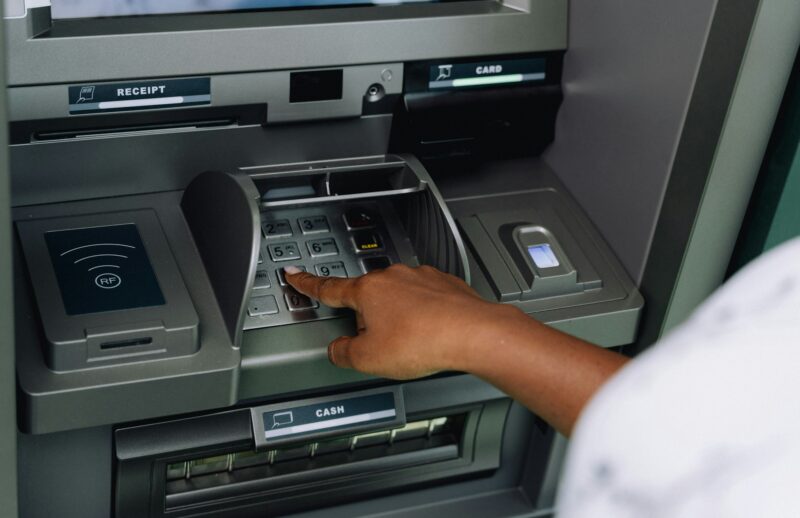Cash Optimization with Brink’s ATM Management

Optimizing Cash in Circulation with Brink’s ATM Management
In the ATM industry, ensuring uptime is paramount. Cash optimization plays a crucial role in enabling financial institutions and ATM deployers to minimize cash in circulation without compromising service availability.
As interest rates fluctuate and inflationary pressures mount, it becomes increasingly important to continually assess and balance the cost of cash against the expenses associated with transportation. Additionally, a rapidly evolving risk landscape introduces further complexity to ATM fleet and cash management strategies.
Brink’s Global ATM Management Solutions (AMS) brings extensive expertise in navigating these challenges. Through a distinctive approach, Brink’s effectively reduces idle cash and enhances return on investment (ROI) by implementing robust cash management strategies tailored to the dynamic needs of the industry.
Colm McKiernan, Vice President, Brink’s North America AMS Operations authored his thesis in 2016 on ‘ATM Services: Transforming the Customer Value Proposition’. We caught up with Colm to hear his views on how to optimize management of the cash ecosystem.
Brink’s cash ecosystem management for ATMs
Modern cash management strategies for ATM networks require comprehensive design and planning that encompass the entire cash supply chain. By integrating cash supply, branch inventory forecasting, order optimization and cash monitoring, Brink’s can help reduce total cash demand for an ATM portfolio by 30-40%.
Brink’s unique cash acquisition strategy
Brink’s approaches cash acquisition differently from other ATM Managed Services (AMS) providers. Leveraging our advanced technology, we can identify inventory owners within a specific geographic area who generate a net surplus of cash flow. Our strategic position as a cash vault service provider allows us to precisely determine how much cash is needed to meet demand, versus the average surplus at the end of each day. By evaluating optimal stock days to ensure supply resilience, we can pinpoint net excess inventory and align it with ATM dispense demand in the market.
Brink’s partners with financial institutions to facilitate denomination transfers, ensuring a steady cash supply while reducing costs associated with Fed shipping. This collaboration minimizes the need for higher inventory buffers by creating in-branch outlets for transfers, avoiding long lead times for cash acquisition and shipment. By optimizing order lead times, Brink’s reduces average cash in circulation, enhances ATM forecasting accuracy and enables a faster response to low or out-of-cash events.
Inventory forecasting and management
Cash moves through a closed-loop supply chain, making accurate forecasting essential for managing inventories. Brink’s offers comprehensive, tech-enabled inventory forecasting and planning services that project cash positions and identify when specific denominations should be shipped in or out. Our cash ecosystem management is further optimized by forecasting the exact amount of cash required to meet the needs of individual markets.
Brink’s conducts an analysis of future ATM cash requirements 7-10 days in advance. This proactive approach allows inventory management analysts to anticipate potential spikes or dips in demand, ensuring that inventory owners can achieve target stock days. The goal of cash cycle management is to minimize the time cash remains idle and not in use within ATMs. By planning inventory in advance, we can submit orders for branch fulfillment at the last possible moment, reducing cash cycle time. Unlike other managed service providers who must place orders four days in advance, Brink’s proactive inventory management minimizes cash cycle times and enhances service efficiency.
Traditional ATM cash forecasting
The primary goal of ATM forecasting is to determine when an ATM should be serviced and how much cash it requires to maximize availability for consumers. Effective cash management strategies must balance this objective with the need to minimize cash in circulation. Historically, financial institutions have struggled to balance the fluctuating costs of cash and transportation. Increasing transportation frequency can reduce total cash in circulation, but without visibility into the impact of these changes, they can disrupt servicing and ultimately reduce ATM uptime.
Brink’s is uniquely positioned to optimize ATM cash management by carefully considering branch capacity, route density and drive times. Our cash management analysts work closely with regional and branch leaders to ensure service excellence. Brink’s focuses on the key metric of average cash in circulation per ATM, striving to maintain the lowest necessary cash levels while balancing transportation costs.
Using various cash optimization models, Brink’s determines the optimal cash load and replenishment frequency for each ATM. Key inputs include terminal type, capacity, risk level, average dispense rate and associated costs. Our cash analysts continuously adjust their planning as variables change, ensuring that our strategies remain economically viable and effective.
Cash monitoring
Brink’s advanced technology platform enables real-time monitoring of ATM cash levels, allowing for proactive replenishment. With a focus on minimal order lead times, our cash supply strategies improve the accuracy of run-out date forecasting and ideal cash amounts. Our functionally integrated teams of cash analysts and route planners ensure that plans remain flexible, maintaining ATM cash levels even during unforeseen cash usage spikes.
On the day of ATM replenishment, our monitoring tools closely examine route activity, considering factors such as traffic delays or store closures. This allows us to make immediate decisions on priority loading. For example, if a cash-in-transit vehicle departs late from the depot, Brink’s monitoring tools can identify which ATMs require immediate attention, with the rest serviced the following day. This ability to make informed decisions on the fly is a testament to Brink’s commitment to continuous improvement. Our ongoing root cause analysis of service issues or missed targets ensures that we regularly adapt our service frequencies, days of service and cash forecasting configurations.
Partnering with Brink’s for cash management excellence
Brink’s advanced cash management expertise can significantly improve ATM availability and transform cost structures. By partnering with Brink’s on an integrated and comprehensive approach to cash management, financial institutions can gain greater visibility into their cash ecosystem and free up capital for business investment.
Reach out today to assess the opportunity cost in your cash ecosystem.
For more information, visit Cash Management. To optimize your cash management now, contact your local Brink’s team.
FAQs
What is proactive ATM cash forecasting?
A predictive approach to continuously assess the optimal time to service an ATM, with focus on making the final decision at the closest time to the service event – to ensure ATM remains available to the public – with consideration for cost efficiencies. This involves advanced analytics, historical data and real-time inputs to predict future needs.
Can ATM cash management result in cost savings?
Total cash demand for an ATM portfolio can be reduced by 30-40% with cohesive planning of cash supply, branch inventory forecasting, order optimization and cash monitoring. Brink’s Global AMS has vast experience and a unique approach for minimizing idle cash and maximizing ROI through effective cash management strategies.
How do financial organizations benefit from effective cash monitoring of their ATM estate?
Brink’s Global AMS provides a single point of accountability for your forecasting and replenishment activities, allowing you to concentrate on your core business. Typical benefits include:
- Maximize cash availability at the ATM, with consideration for denomination demand of the consumer base
- Reducing average cash assets outstanding to maintain service, with sourcing strategies that follow key cash recycling principles
- Rely on a company that is managing risk since 1859, to determine stock levels which account for threats for specific targets and areas with high ATM crime rates
- Reduce manual dependencies of bulk cash ordering, ATM cash fill requests, low cash tracking and reconciliation.







